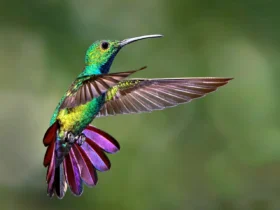The family Paradisaeidae, commonly known as birds-of-paradise, is a group of birds that exhibit some of the most remarkable and elaborate plumage and courtship displays in the avian world. Here is more detailed information about the family Paradisaeidae:
Diversity: The family Paradisaeidae comprises 42 recognized species of birds, all endemic to the tropical rainforests and surrounding regions of New Guinea and parts of eastern Australia. These species are further classified into three subfamilies: Paradisaeinae (typical birds-of-paradise), Ptilonorhynchinae (bowerbirds), and Epimachinae (sicklebills and riflebirds). Each subfamily has its own unique characteristics and behaviors.
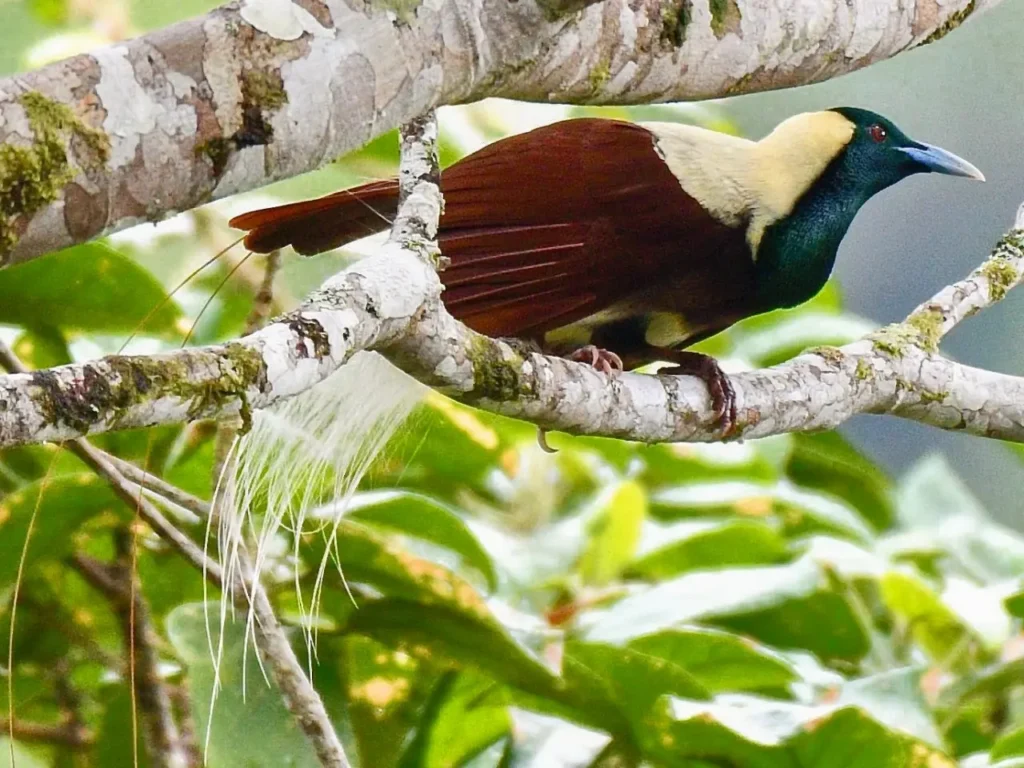
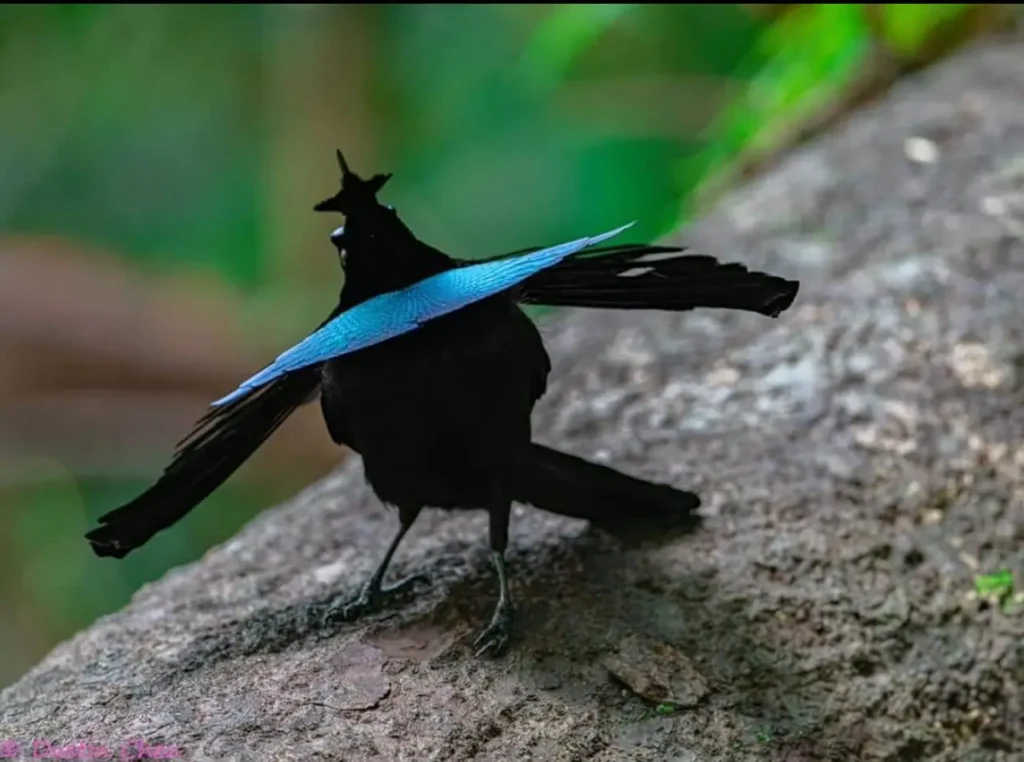
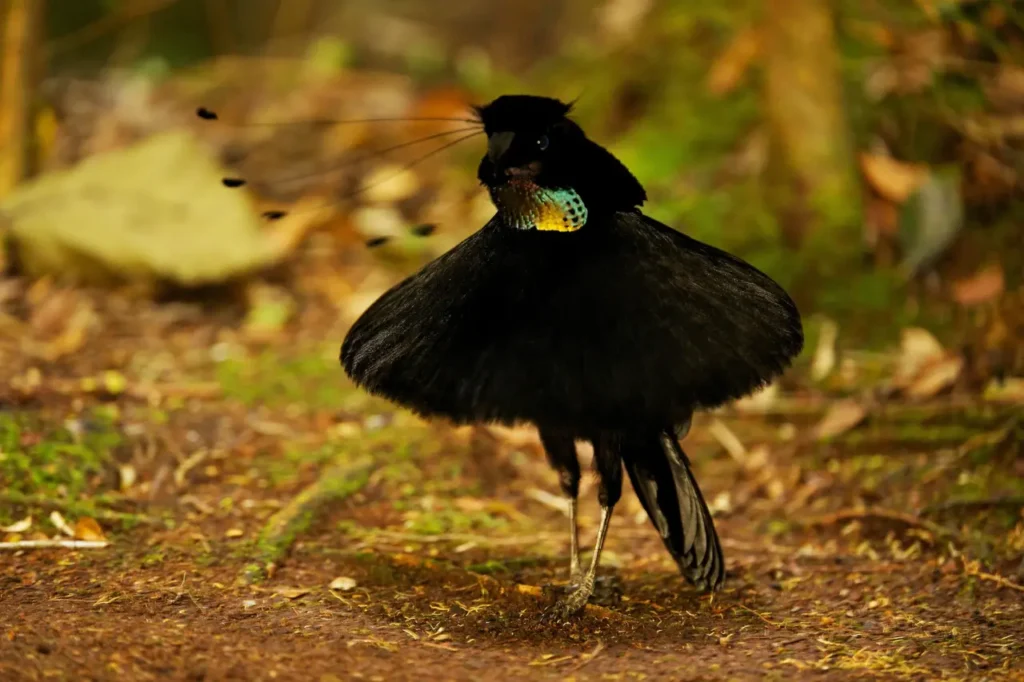
Physical Features: Birds-of-paradise exhibit a wide array of physical features and elaborate plumage, especially in males. They are renowned for their vivid and diverse colors, including bright reds, blues, greens, and yellows. Many species have ornate and elongated feathers, tail plumes, crests, wattles, or other specialized structures that are used in courtship displays. Females, while generally less colorful, still possess unique and attractive plumage.
Courtship Displays: Courtship displays of birds-of-paradise are some of the most extraordinary and complex in the avian world. Males perform elaborate dances and displays to attract females. These displays involve intricate movements, acrobatics, exaggerated postures, and vocalizations. The purpose of these displays is to showcase their vibrant plumage and physical prowess to impress and court females.
Habitat and Range: Birds-of-paradise are restricted to the rainforests and lowland forests of New Guinea and nearby islands, including parts of Indonesia and Papua New Guinea. They inhabit the canopy and understory layers of the forest, rarely descending to the ground. Different species have adapted to specific microhabitats within the rainforest, such as riverside forests, clearings, or dense foliage.
Diet: Birds-of-paradise have a primarily frugivorous diet, feeding on a variety of fruits, nectar, and small arthropods. They have specialized bills and tongues that allow them to extract nectar from flowers. Some species also consume insects, spiders, and other invertebrates. Bowerbirds within the family Paradisaeidae have a unique behavior of building elaborate bowers (structures made of twigs) and collecting various objects as part of their courtship rituals.
Conservation: Many species of birds-of-paradise are threatened by habitat loss due to deforestation and human activities such as logging, agriculture, and mining. They are also targeted for their beautiful feathers, which has led to illegal trade and hunting. Several species within the family Paradisaeidae are classified as vulnerable or endangered. Conservation efforts focus on protecting their habitats, raising awareness, and implementing measures to combat illegal trade.
Scientific and Cultural Significance: Birds-of-paradise have fascinated scientists, naturalists, and bird enthusiasts for centuries. They have played a significant role in the study of evolutionary biology, sexual selection, and behavioral ecology. The unique beauty and cultural importance of birds-of-paradise have also made them symbols of the rich biodiversity and cultural heritage of the regions they inhabit, particularly in New Guinea.
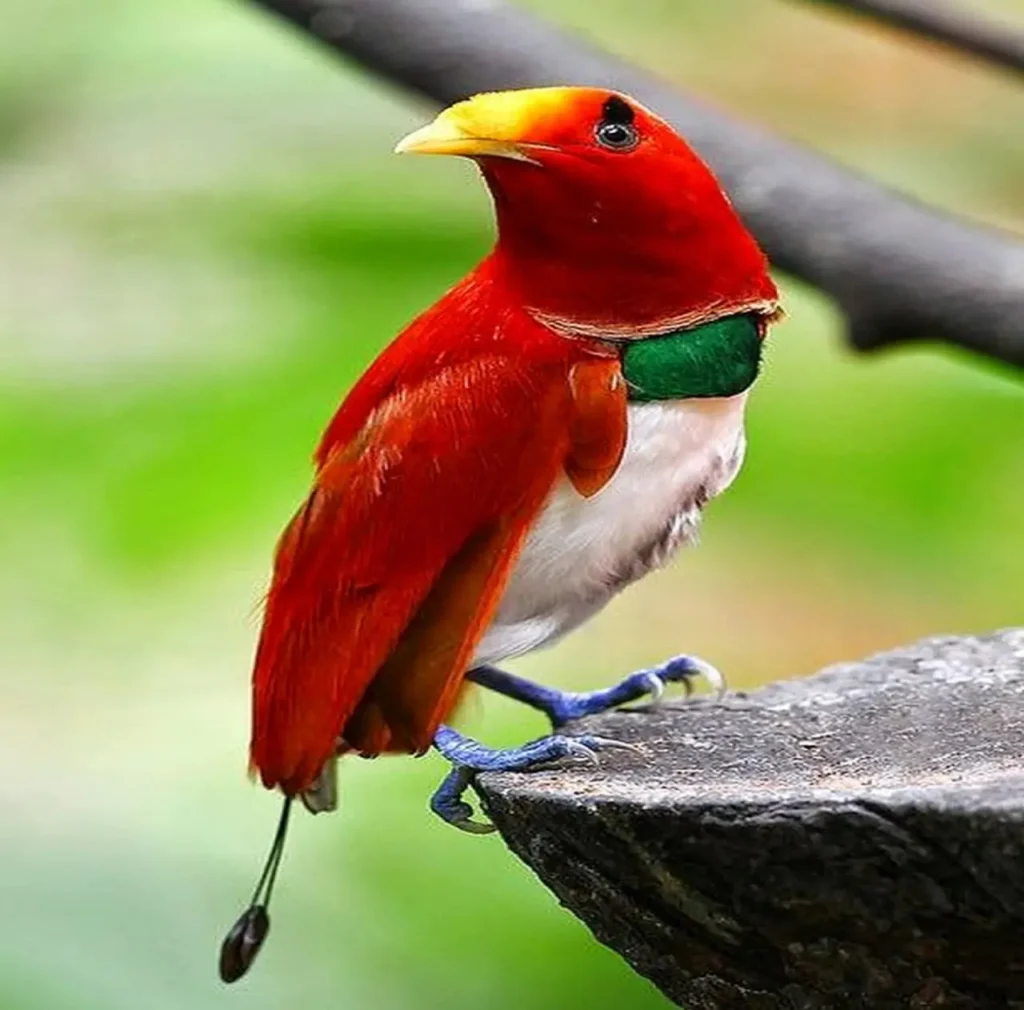
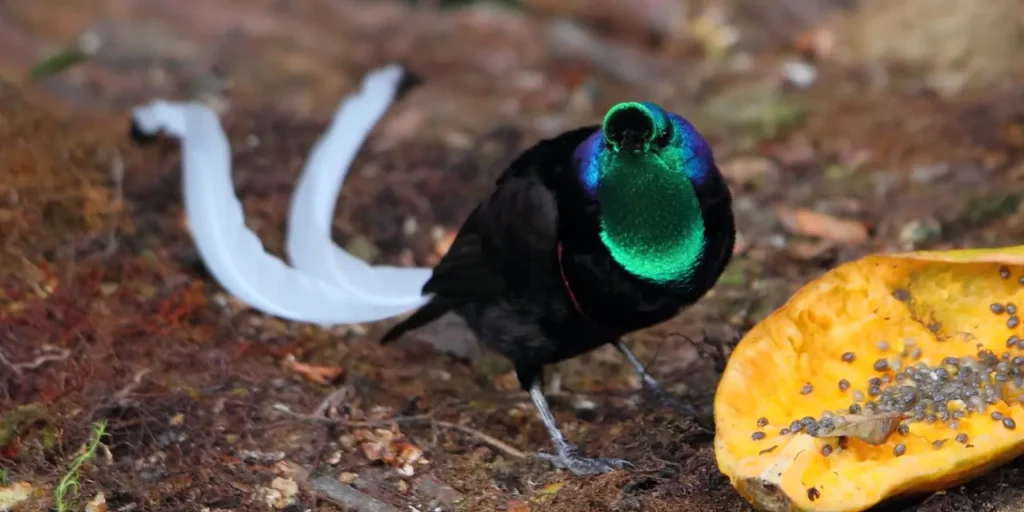
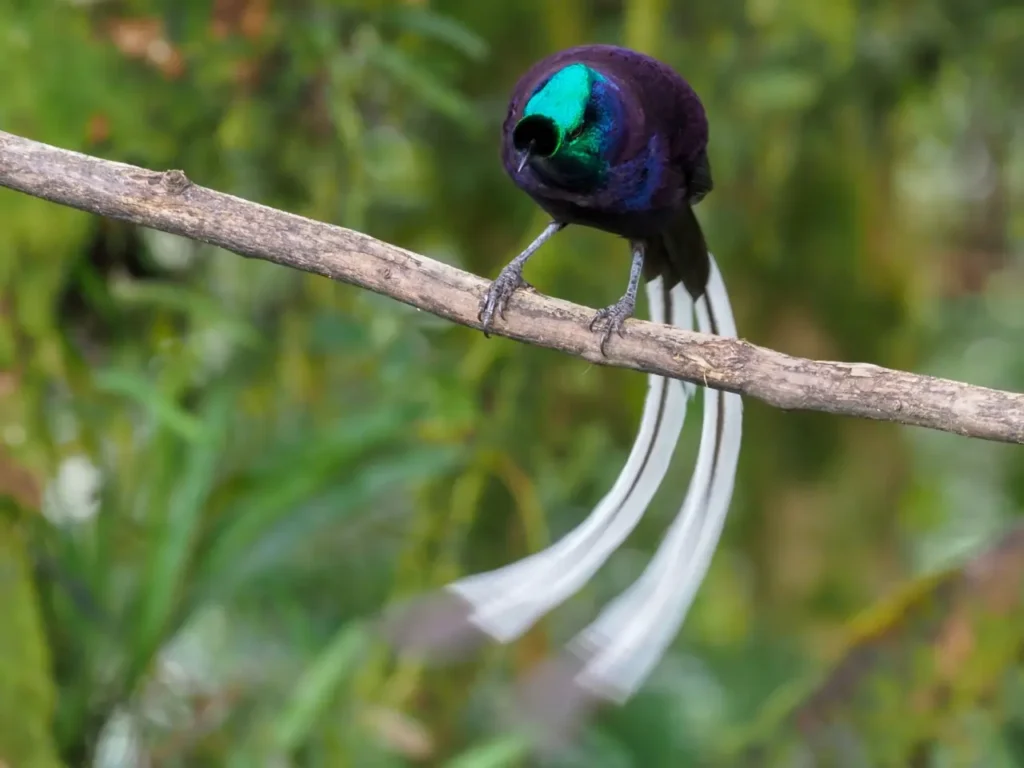
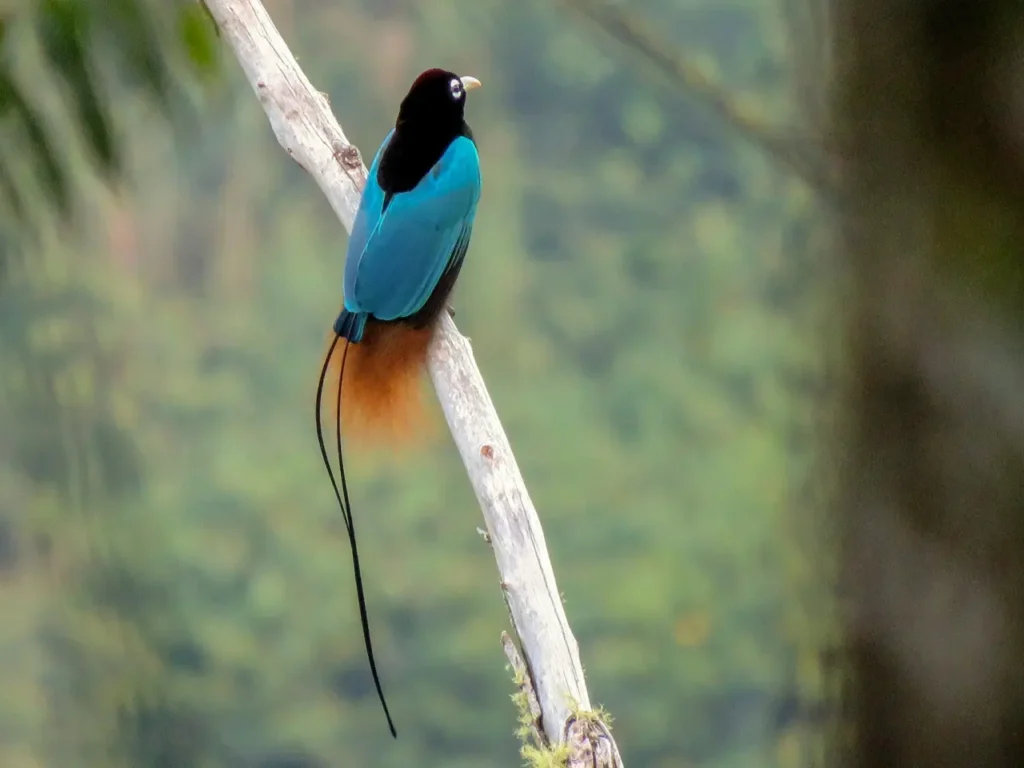
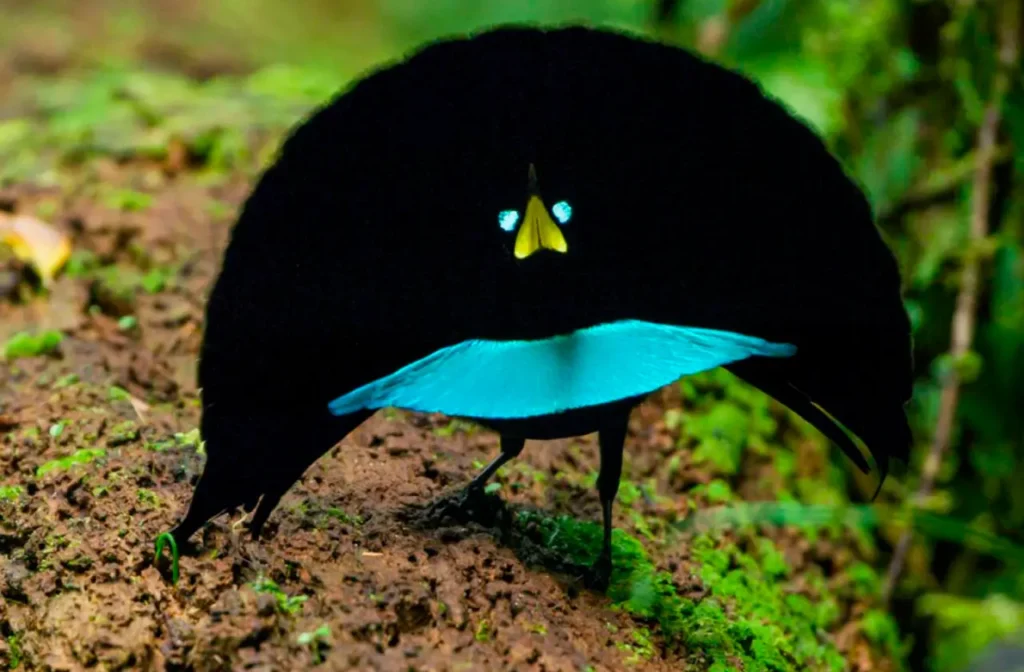
Types of Birds-of-Paradise
Birds-of-Paradise are a family of birds known for their stunning and elaborate plumage. There are several species of Birds-of-Paradise, each with its own unique appearance. Here are some notable examples:
- Greater Bird-of-Paradise (Paradisaea apoda): This species is known for its striking male plumage, featuring long, silky black feathers, iridescent green breast shield, and a yellow cape-like plumage on its back. Found in New Guinea.
- Lesser Bird-of-Paradise (Paradisaea minor): The male Lesser Bird-of-Paradise has elongated flank plumes that form a beautiful, ornamental fan. Its plumage is a combination of dark green, yellow, and white. Found in New Guinea.
- King Bird-of-Paradise (Cicinnurus regius): The King Bird-of-Paradise has a unique appearance with bright red and blue plumage on its head and neck, a green body, and long, flowing tail feathers. Found in New Guinea.
- Wilson’s Bird-of-Paradise (Diphyllodes respublica): This species has an intricate plumage pattern, with a bright turquoise crown, emerald-green back, and a shield-shaped red and yellow ornamental plume on its chest. Found in Indonesia.
- Red Bird-of-Paradise (Paradisaea rubra): The male Red Bird-of-Paradise displays brilliant red plumage, with a pair of elongated tail wires and glossy black feathers on its head and chest. Found in Indonesia.
- Raggiana Bird-of-Paradise (Paradisaea raggiana): The male Raggiana Bird-of-Paradise showcases a spectacular plumage, with bright red flank plumes, yellow crown feathers, and a black breast shield. Found in Papua New Guinea.
- Twelve-wired Bird-of-Paradise (Seleucidis melanoleuca): This species is known for its long, wire-like tail feathers, with each wire ending in a circular tuft. It has a black body with a bright yellow crown. Found in New Guinea.
- Superb Bird-of-Paradise (Lophorina superba): The male Superb Bird-of-Paradise has an extraordinary courtship display, involving intricate movements and displaying iridescent blue and green plumage, along with a cape-like black feather on its breast. Found in New Guinea.
- Blue Bird-of-Paradise (Paradisaea rudolphi): This species has a rich blue plumage on its head, back, and breast, with elongated flank plumes that form a distinct shape. Found in Indonesia and Papua New Guinea.
- Ribbon-tailed Astrapia (Astrapia mayeri): The male Ribbon-tailed Astrapia has two long, ribbon-like tail feathers that can extend up to three times the length of its body. Its plumage is predominantly black with a greenish sheen. Found in New Guinea.
- Victoria’s Riflebird (Ptiloris victoriae): The male Victoria’s Riflebird displays glossy black plumage, a bluish-green throat, and a distinctive purple and green iridescent cape. Found in Australia and Papua New Guinea.
- Paradise Riflebird (Ptiloris paradiseus): This species has a stunning combination of black and iridescent green plumage, with an elongated, curved central tail feather. Found in Australia and Papua New Guinea.
- Trumpet Manucode (Phonygammus keraudrenii): The male Trumpet Manucode showcases glossy black plumage, a coppery-green sheen, and a long, curved central tail feather. Found in New Guinea.
- Curl-crested Manucode (Manucodia comrii): This species has a distinctive curled crest on its head, black plumage, and iridescent green throat feathers. Found in New Guinea.
- Emperor Bird-of-Paradise (Paradisaea guilielmi): The male Emperor Bird-of-Paradise has a bright yellow crown, ornamental flank plumes, and a red iridescent breast shield. Found in Papua New Guinea.
- Lawes’s Parotia (Parotia lawesii): This species has a unique courtship display, involving intricate movements and showcasing its iridescent green breast shield and elongated black plumes. Found in Papua New Guinea.
- Magnificent Bird-of-Paradise (Diphyllodes magnificus): The male Magnificent Bird-of-Paradise has a bright green head, black breast shield, and a long, iridescent green cape-like plume. Found in Papua New Guinea.
- Western Parotia (Parotia sefilata): This species has an elaborate courtship display, with males showcasing a unique combination of black, yellow, and iridescent blue-green plumage. Found in Indonesia and Papua New Guinea.
- Crested Bird-of-Paradise (Cnemophilus macgregorii): This species has a distinctive red and yellow crest on its head, along with black and yellow plumage. Found in Papua New Guinea.
- Standardwing Bird-of-Paradise (Semioptera wallacii): The male Standardwing Bird-of-Paradise has elongated, ribbon-like white plumes that extend from its wings, along with black and blue plumage. Found in Indonesia and Papua New Guinea.
- Princess Stephanie’s Astrapia (Astrapia stephaniae): This species features black plumage with a bright green head, a long, iridescent blue-green breast shield, and a curled, iridescent tail feather. Found in Papua New Guinea.
- Red Bird-of-Paradise (Paradisaea rubra): The male Red Bird-of-Paradise has a vibrant red plumage, elongated tail wires, and black feathers on its head and chest. Found in Indonesia.
- Greater Lophorina (Lophorina superba): The male Greater Lophorina has an intricate courtship display, displaying a cape-like black plumage with iridescent blue-green patches on its breast. Found in New Guinea.
- Arfak Astrapia (Astrapia nigra): This species has a black plumage with a metallic green iridescence and a fan-shaped tail. Found in Indonesia and Papua New Guinea.
- Golden Bird-of-Paradise (Paradisaea chrysopaea): The male Golden Bird-of-Paradise features a bright yellow plumage with elongated tail feathers and a green crown. Found in Indonesia and Papua New Guinea.
- Wallace’s Standardwing (Semioptera wallacii): This species has elongated, ribbon-like white plumes extending from its wings, along with black and blue plumage. Found in Indonesia and Papua New Guinea.
- Blue Bird-of-Paradise (Paradisaea rudolphi): The male Blue Bird-of-Paradise showcases a rich blue plumage on its head, back, and breast, with elongated flank plumes. Found in Indonesia and Papua New Guinea.
- Ribbon-tailed Astrapia (Astrapia mayeri): The male Ribbon-tailed Astrapia has two long, ribbon-like tail feathers that can extend up to three times the length of its body. Found in New Guinea.
- Flame Bowerbird (Sericulus aureus): The male Flame Bowerbird has a bright orange plumage, adorned with iridescent violet-blue markings. Known for its elaborate bower-building behavior. Found in New Guinea.
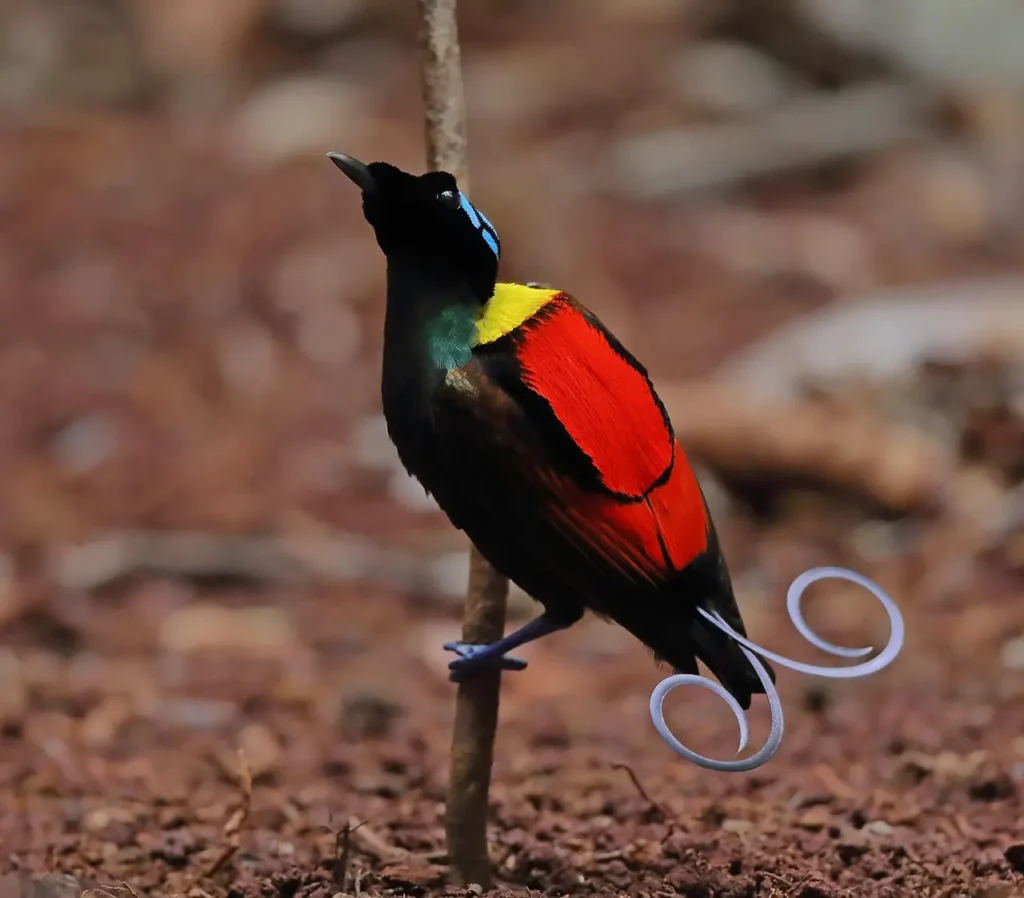
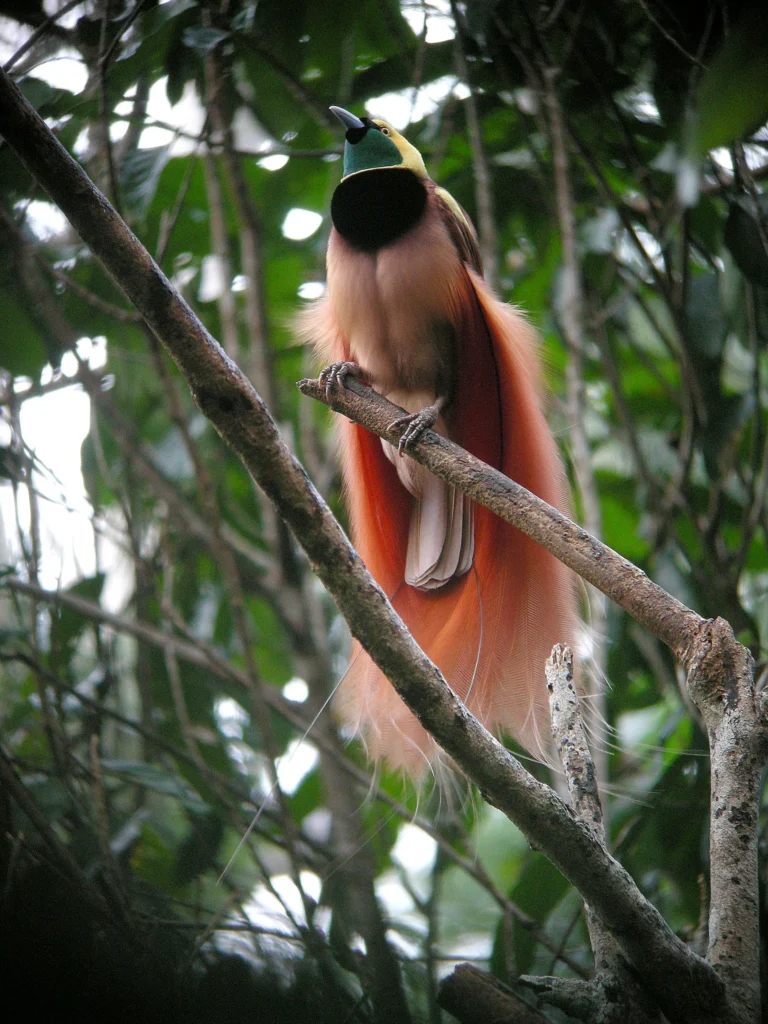
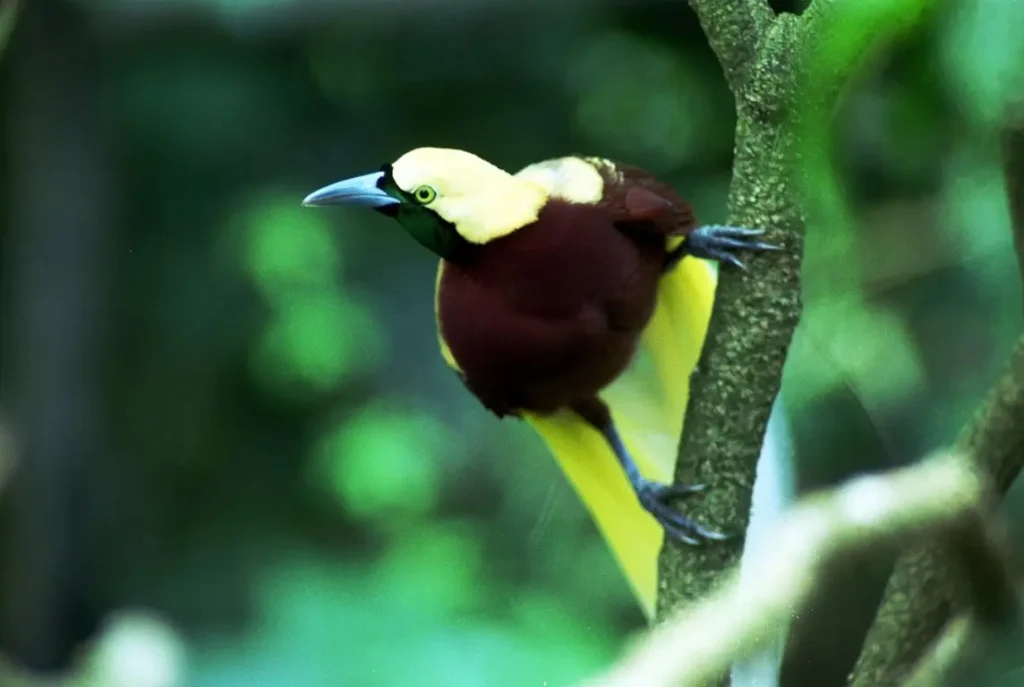
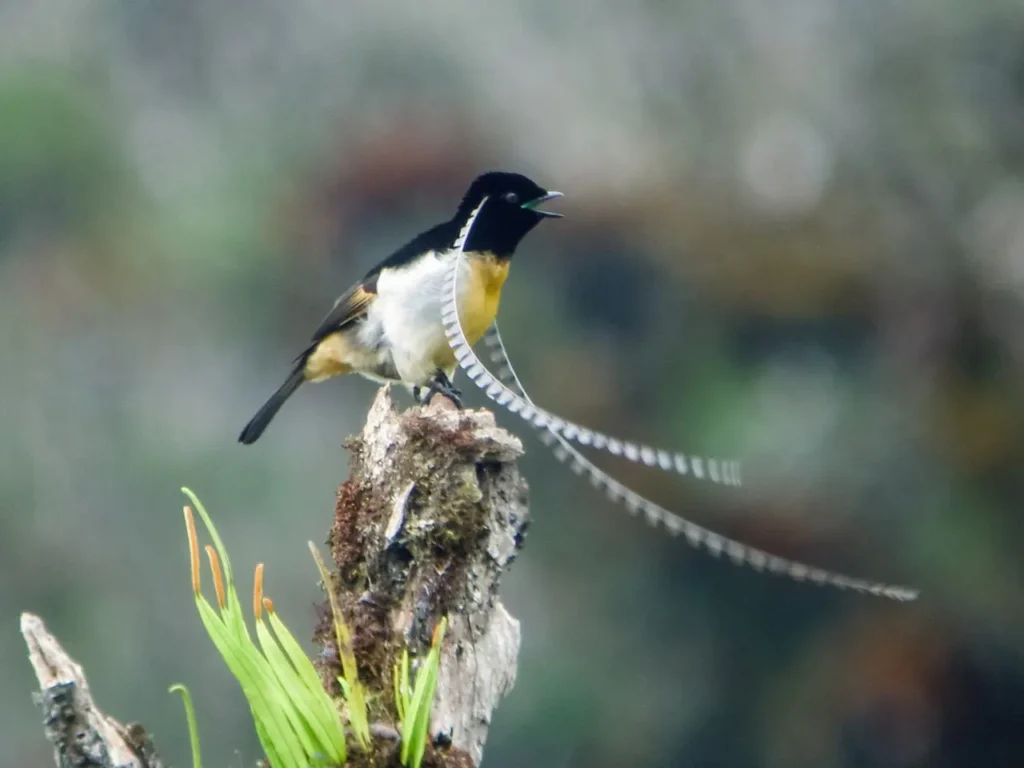
These are just a few examples of the diverse and visually captivating Birds-of-Paradise species. Each species has its own unique characteristics and is native to specific regions of Papua New Guinea and nearby islands in the eastern part of Indonesia.
